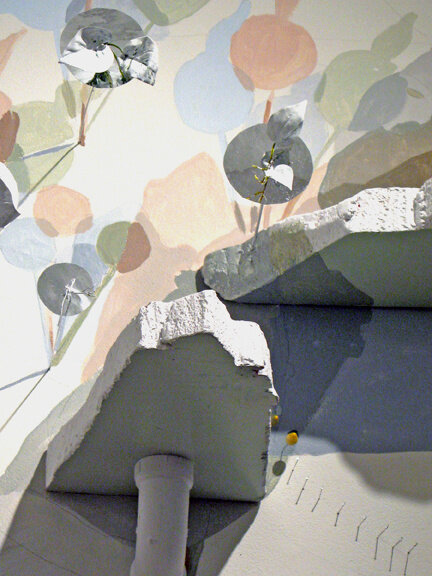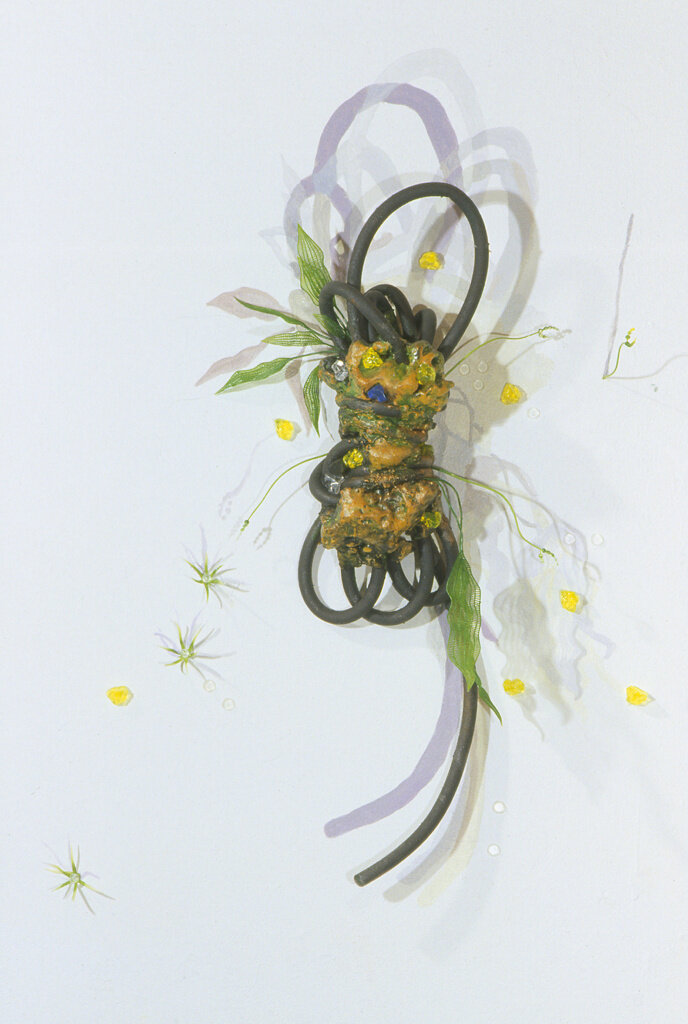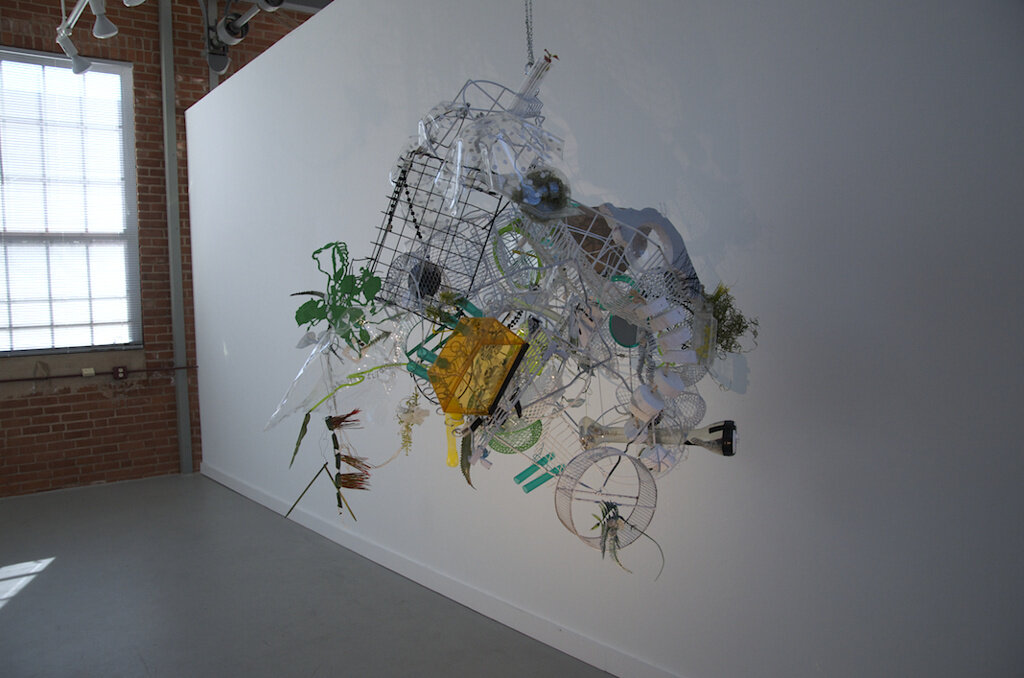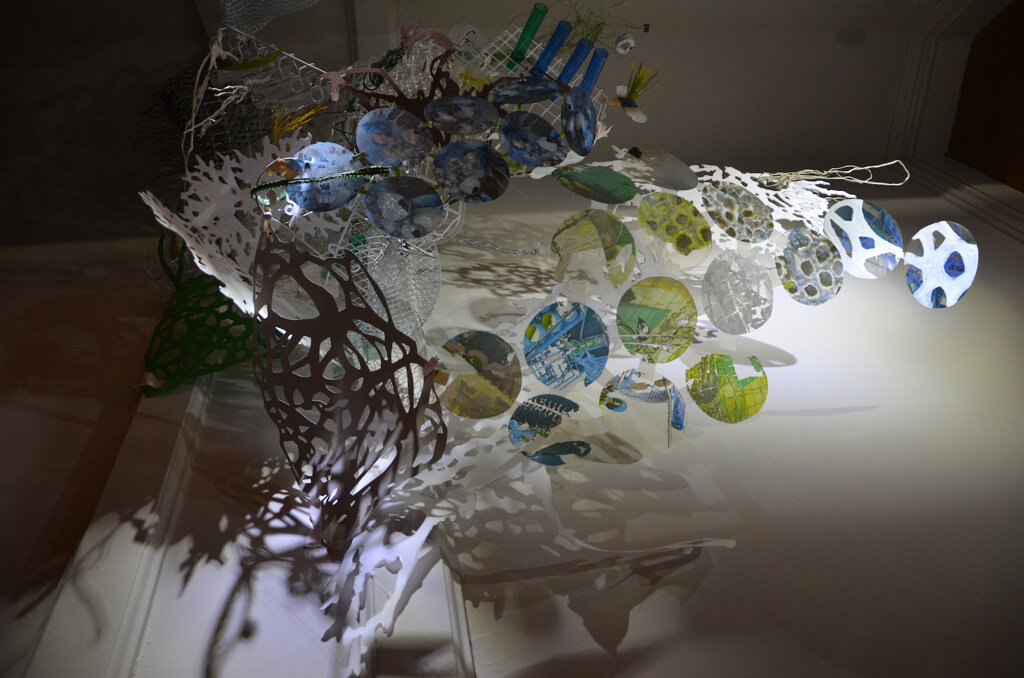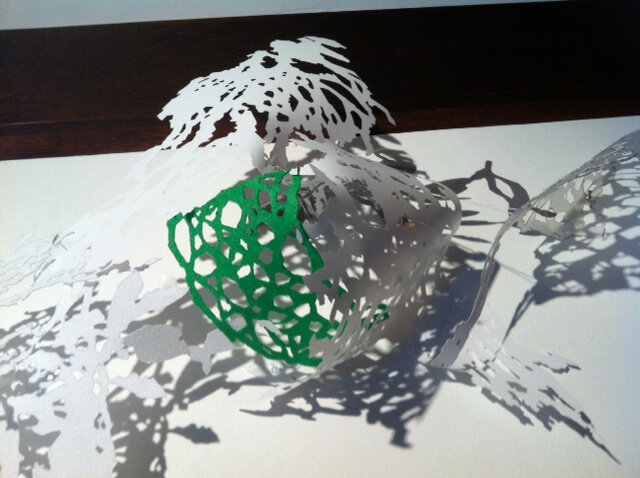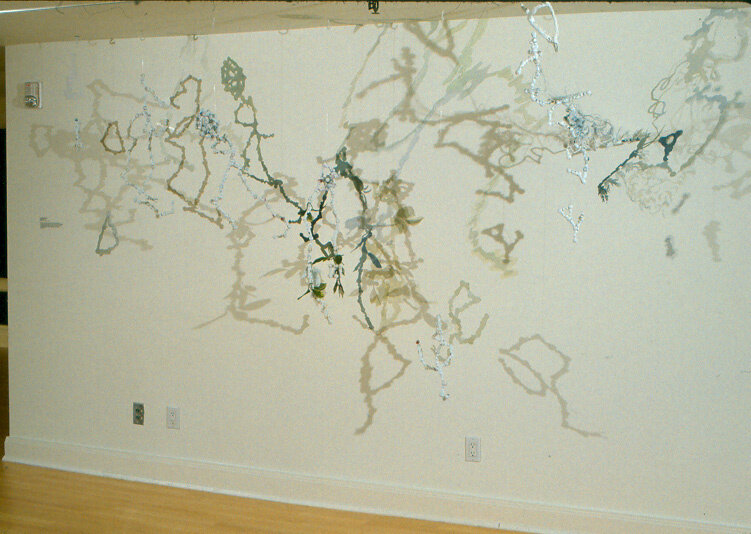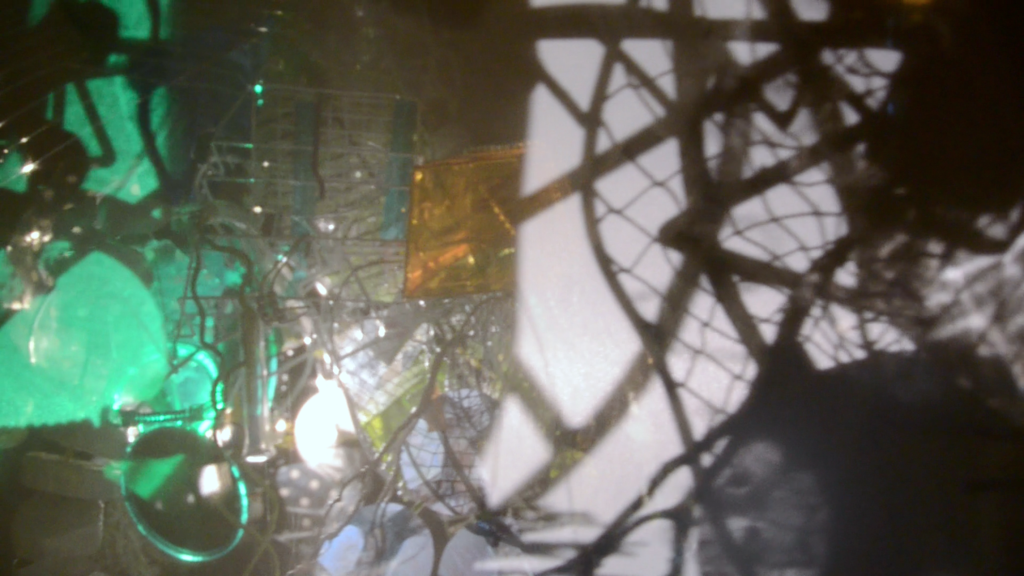





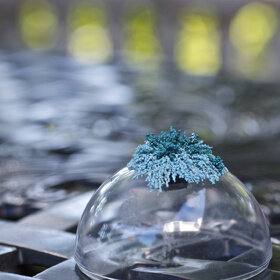
These sculptural objects
echo the tension between
enduring and fragile
Check out the online exhibition on EyeShow curated by Stephen Kobasa:
Growth Factors. In and Out of Nature.
Lichen Field Project. Governor's Island Art Fair. NYC. 2013
Lichen Field Project explores the growth and migration patterns of synthetic lichen created by the artist and propagated via the internet and everyday life. Images of synthetic lichen, printed on outdoor magnets are "planted" around New Haven in sites that are in transition-- offering a symbol of regrowth.
Created from magnets, iron, paint and "in place" plastic packaging, Lichen Fields ll alludes to organic/technological growth and the fragile balance between nature and people. Lichen fields can survive thousands of years under extreme conditions yet die instantly when touched by humans. These sculptural objects echo this tension between enduring and fragile; like lichen, when handled, magnetic attraction disrupts and dissolves form.

Geode. GMT. Site Specific Installation.New Haven Register Building. CWOS

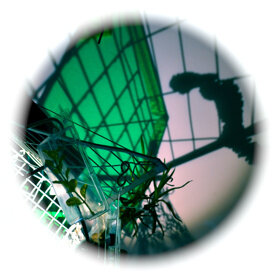

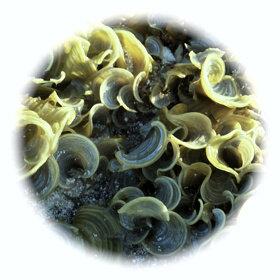
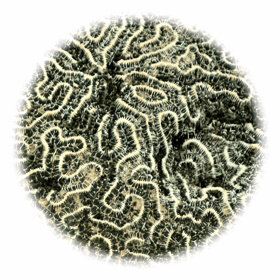



A Parallel Guide To Seaweed
Sea Grant Project
A Parallel Guide to Seaweed is a book that serves as a counterpart to a traditional field guide to New England Seaweed, informed by observations, interactions and interventions with nature, and current aquacultural research. Invented, hybrid forms, referencing traditional practices of Victorian pressed flowers, silhouette portraiture, parallel botany, and notions of utopia/dystopia, are created through a combination of drawn, scanned, and altered imagery.
This project is made possible by the Connecticut Sea Grant and Center for Center for Contemporary Printmaking in Norwalk, CT
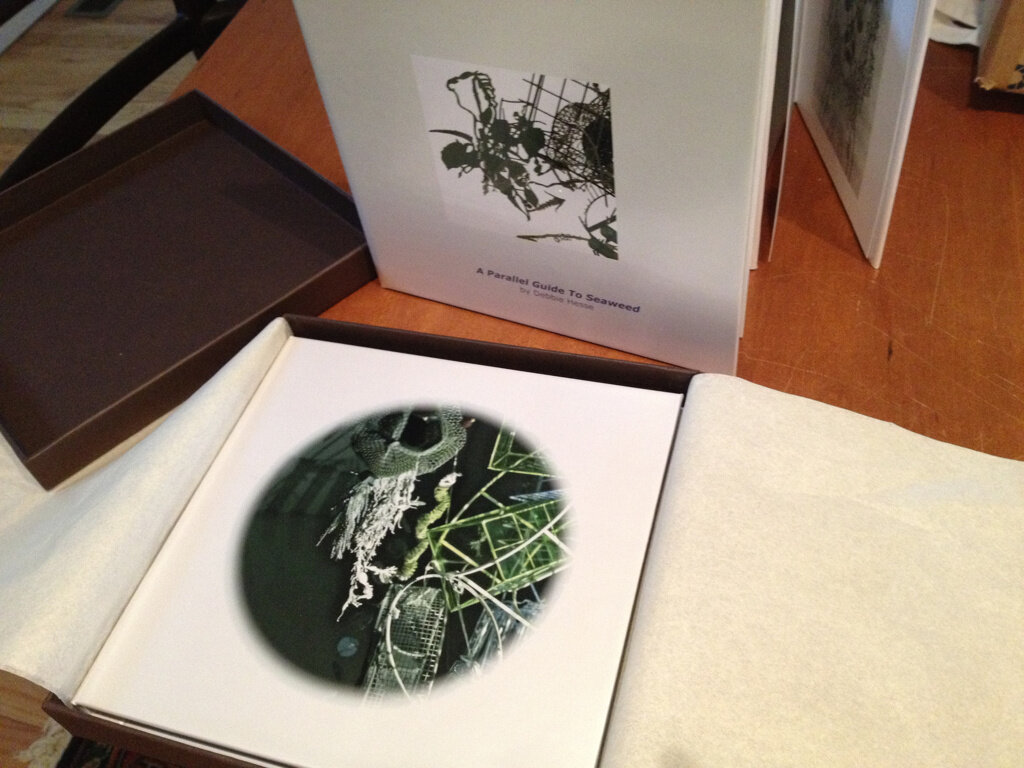





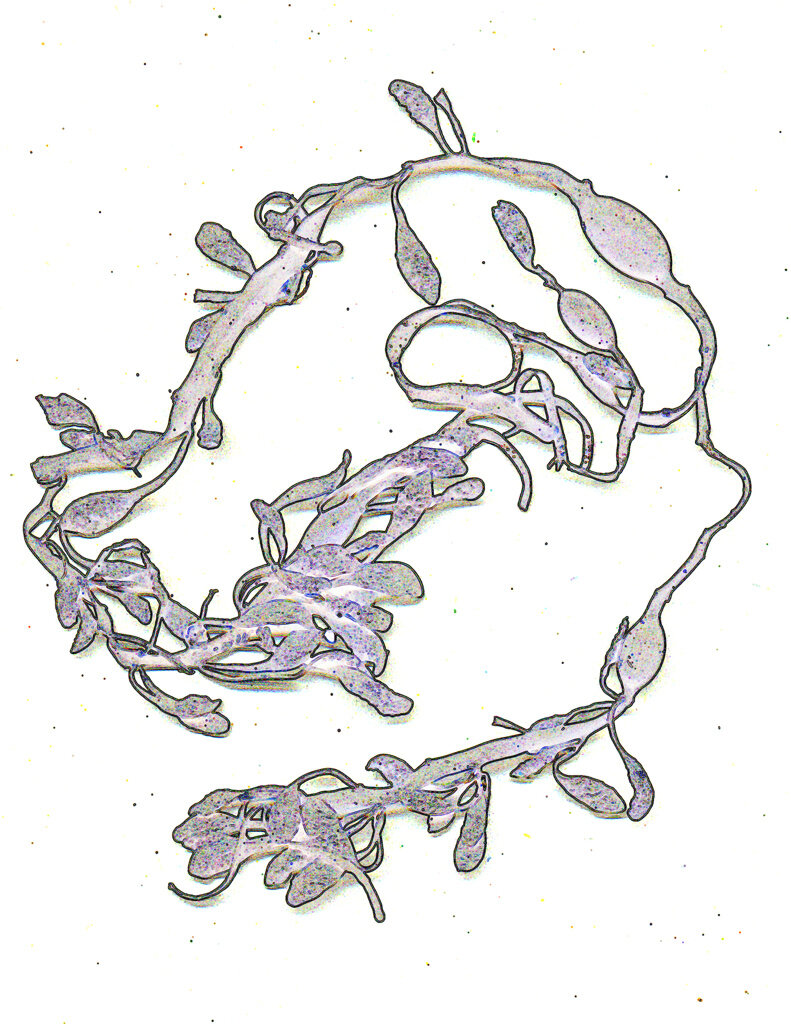
Works on paper and birch wood panel that incorporate representations of digital detritus, cast off toy parts along with vines and other plant life into organic webs and tangles,





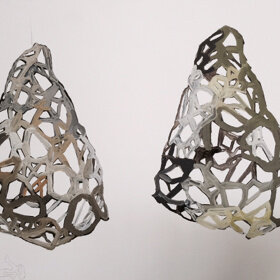

Site specific installations from 2005- 2015. Nature-inspired works that combine organic and artificial materials and forms with cast/painted shadows to create parallel, hybrid, changing environments that explore ideas about growth, materiality and the ethereal.
As the viewer passes through different zones to enter the exhibition space, DEBBIE HESSE’S site-specific installation Ingress extends the transition from outside to inside by incorporating organic and architectural elements from the surrounding area. Hesse redefines the entryway by narrowing the gallery foyer—itself, a space of transition—with a border garden. Constructed of grids of grass, the carefully planned arrangement references both the rolling hills of the natural Connecticut landscape and the industrial, agricultural rows of sown crops—both of which dot the landscape along the I-95 local highway. Once inside the gallery, the viewer is confronted by a series of visual contradictions: organic and plastic forms, painted and cast shadows, real and fake representations of nature. This layered scene explores the erosion of nature’s authenticity through human intervention.
Christina Vassallo, Curator







